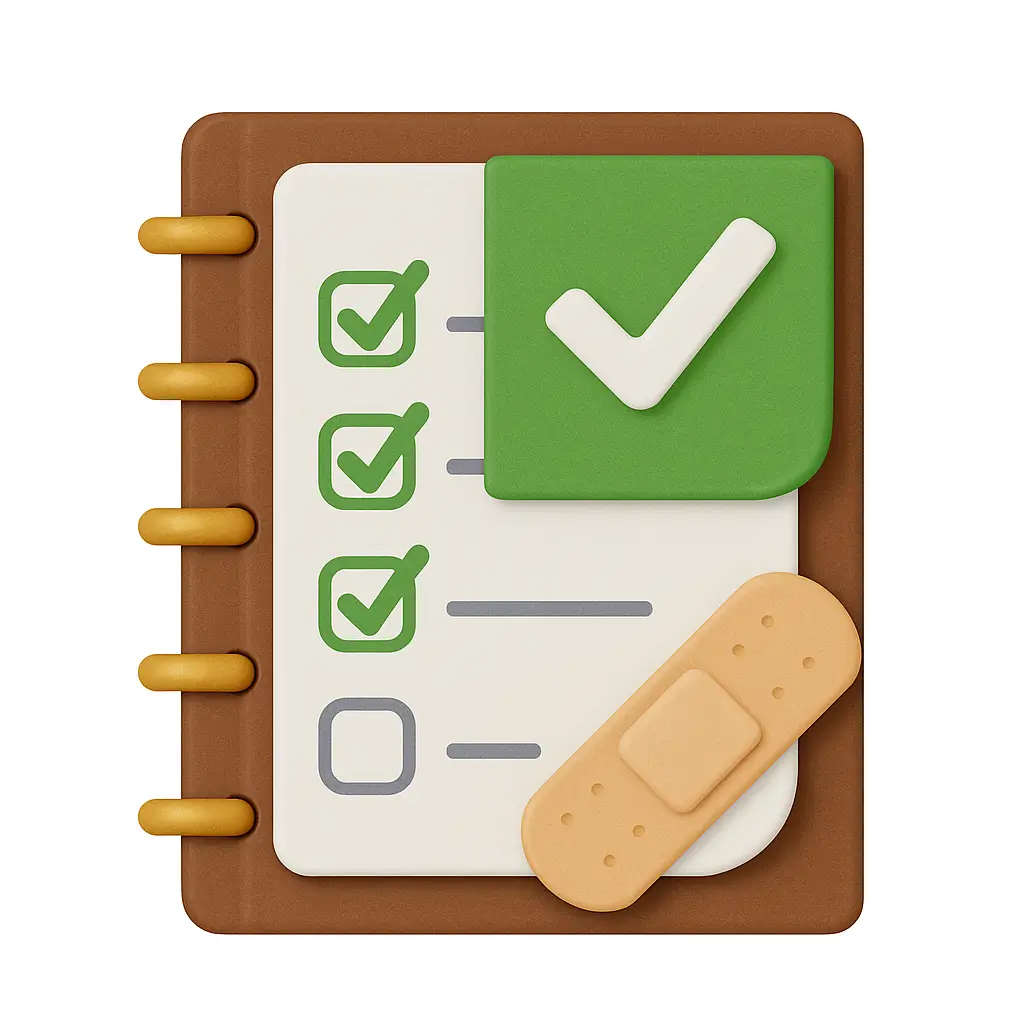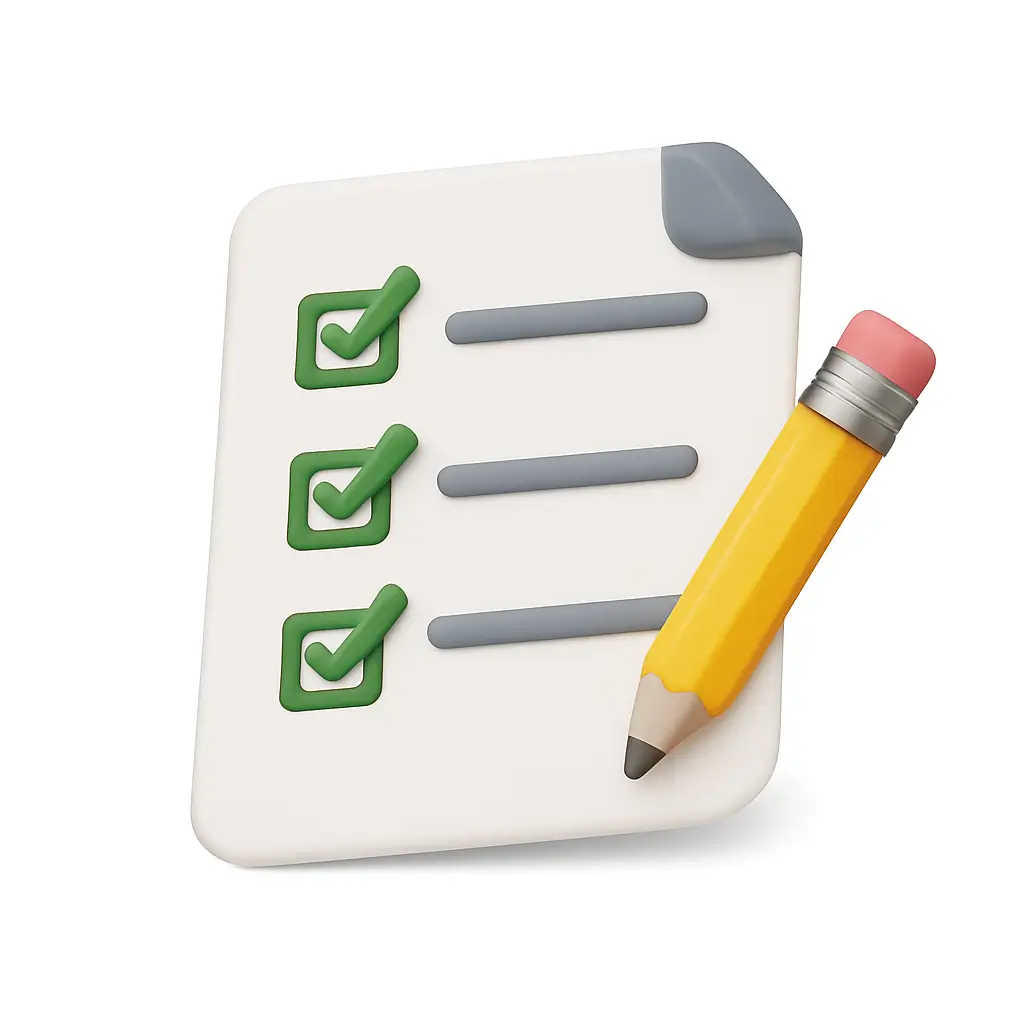Habits That Actually Stick
A practical, science-backed guide to build small habits that last without relying on motivation.
June 23, 2025 · 5 min read

🏋️♂️ The January gym phenomenon
Every January, gyms overflow with hopeful people. By March, they're empty again.
It's not about willpower. It's about approach.
Most people try to change too much, too fast. They rely on motivation instead of systems. They focus on outcomes instead of process.
There's a better way to build lasting habits.
Why most habits fail
The All-or-Nothing Trap
People set ambitious goals: "I'll work out for an hour every day." When life gets busy and they miss a day, they feel like failures and quit entirely.
Motivation Dependency
Motivation is unreliable. It comes and goes based on mood, energy, and circumstances. Building habits on motivation is like building a house on sand.
Outcome Obsession
Focusing on results (lose 20 pounds) instead of process (eat vegetables with lunch) creates frustration when progress feels slow.
How habits form
Habits live in your basal ganglia, not your prefrontal cortex. This means they operate below conscious thought once established.
The habit loop has three parts:
- Cue - Environmental trigger
- Routine - The behavior itself
- Reward - The benefit you get
Understanding this loop is key to building habits that stick.
The 2‑minute rule
Start ridiculously small. If you want to read more, commit to reading one page per day. Want to exercise? Do one push-up.
Why this works:
- Removes the barrier to starting
- Builds the neural pathway
- Creates early wins
- Establishes the identity
You can always do more, but you can't do less than something.
Habit stacking
Attach new habits to existing ones. Use this formula:
"After I [existing habit], I will [new habit]."
Examples:
- After I pour my morning coffee, I will write one sentence in my journal
- After I sit down at my desk, I will review my top three priorities
- After I brush my teeth, I will do five deep breaths
Your existing habits become anchors for new ones.
Four laws of behavior change
Make It Obvious
- Design your environment to support the habit
- Use visual cues and reminders
- Stack habits with existing routines
Make It Attractive
- Pair habits with things you enjoy
- Join groups where the behavior is normal
- Focus on the immediate benefits
Make It Easy
- Reduce friction and barriers
- Prepare your environment in advance
- Follow the 2-minute rule
Make It Satisfying
- Celebrate small wins immediately
- Track your progress visually
- Never miss twice in a row
Design your environment
Your environment shapes your behavior more than willpower does.
For good habits:
- Make cues visible and accessible
- Remove barriers and friction
- Prepare tools in advance
For bad habits:
- Hide or remove triggers
- Add friction and barriers
- Make the behavior inconvenient
Change your environment, change your behavior.
Identity‑based approach
Instead of focusing on what you want to achieve, focus on who you want to become.
Outcome-based: "I want to lose 20 pounds"
Identity-based: "I want to become someone who takes care of their health"
Every action is a vote for the type of person you want to be. Small, consistent votes eventually win the election.
Simple tracking
Track your habits, but keep it simple:
Good tracking:
- Binary (did it or didn't)
- Takes less than 30 seconds
- Focuses on consistency, not perfection
Bad tracking:
- Complex measurements
- Time-consuming data entry
- Perfectionist standards
A simple checkmark is often enough.
The plateau problem
Habits often feel ineffective at first. You're putting in work but not seeing results. This is normal.
Think of it like:
- Ice melting: Nothing happens until it reaches 32°F, then rapid change
- Bamboo growing: Minimal growth for years, then 90 feet in six weeks
- Airplane taking off: Most energy used before leaving the ground
Breakthrough moments often come after periods of seemingly little progress.
Common mistakes
Starting Too Big
Beginning with hour-long workouts instead of 10-minute walks sets you up for failure.
Trying to Change Everything
Focus on one habit at a time. Master it before adding another.
Ignoring Your Schedule
Don't add habits without considering your existing commitments and energy levels.
Perfectionism
Missing one day doesn't ruin everything. Get back on track immediately.
Keystone habits
Some habits naturally trigger other positive behaviors:
Exercise often leads to better eating and sleep
Making your bed can start a chain of organization
Morning routine sets a productive tone for the day
Identify and focus on keystone habits for maximum impact.
Your habit plan
Week 1: Choose One Habit
Pick something you can do in 2 minutes or less. Make it so easy you can't say no.
Week 2: Stack It
Attach your new habit to an existing routine using the habit stacking formula.
Week 3: Track It
Create a simple tracking system. A calendar with checkmarks works perfectly.
Week 4: Optimize
Adjust your environment and routine based on what you've learned.
Handle setbacks
Setbacks are inevitable. Here's how to handle them:
Never miss twice: If you miss one day, make sure you don't miss the next
Plan for obstacles: Identify likely barriers and create if-then plans
Focus on systems: Judge yourself on consistency, not perfection
Start again immediately: Don't wait for Monday or next month
Advanced tips
Temptation Bundling
Pair habits you need to do with habits you want to do:
- Only listen to podcasts while exercising
- Only watch Netflix while folding laundry
- Only check social media after completing work tasks
Implementation Intentions
Create specific if-then plans:
- "If it's 7 AM, then I will meditate for 5 minutes"
- "If I feel stressed, then I will take three deep breaths"
- "If I finish dinner, then I will immediately wash the dishes"
Play the long game
Habits are not about quick fixes. They're about becoming the person you want to be through small, daily actions.
1% better every day = 37x better in a year
1% worse every day = nearly zero in a year
Small changes compound into remarkable results over time.
Your next step
Choose one habit you want to build. Make it so small it feels almost silly. Do it for the next seven days.
Don't worry about the long-term goal. Focus on showing up consistently.
The person you want to become is built one small action at a time.
---
What's one 2-minute habit you could start today? That's your foundation for lasting change.

